Deep Integration of Fiber-Optic Communication and Sensing Systems Using Forward-Transmission Distributed Vibration Sensing and on–off Keying
Abstract
1. Introduction
2. Integrated System Setup
3. Results and Discussion
3.1. Sensing Operation
3.2. Communication Operation
3.3. Integration Impact Analysis
4. Conclusions
Author Contributions
Funding
Data Availability Statement
Conflicts of Interest
References
- Lu, P.; Lalam, N.; Badar, M.; Liu, B.; Chorpening, B.T.; Buric, M.P.; Ohodnicki, P.R. Distributed optical fiber sensing: Review and perspective. Appl. Phys. Rev. 2019, 6, 041302. [Google Scholar] [CrossRef]
- Hernández, P.D.; Ramirez, J.A.; Soto, M.A. Deep-Learning-Based Earthquake Detection for Fiber-Optic Distributed Acoustic Sensing. J. Light. Technol. 2021, 40, 2639–2650. [Google Scholar] [CrossRef]
- Li, Z.; Shen, Z.; Yang, Y.; Williams, E.; Wang, X.; Zhan, Z. Rapid Response to the 2019 Ridgecrest Earthquake With Distributed Acoustic Sensing. AGU Adv. 2021, 2, e2021AV000395. [Google Scholar] [CrossRef]
- Viens, L.; Bonilla, L.F.; Spica, Z.J.; Nishida, K.; Yamada, T.; Shinohara, M. Nonlinear Earthquake Response of Marine Sediments with Distributed Acoustic Sensing. Geophys. Res. Lett. 2022, 49, e2022GL100122. [Google Scholar] [CrossRef]
- Li, X.; Zeng, Y.; Muchiri, N.D.; Yan, W.; Feng, Y. The use of distributed acoustic sensing (DAS) in monitoring the integrity of cement-casing system. J. Pet. Sci. Eng. 2022, 208, 109690. [Google Scholar] [CrossRef]
- Shao, L.-Y.; Liu, S.; Bandyopadhyay, S.; Yu, F.; Xu, W.; Wang, C.; Li, H.; Vai, M.I.; Du, L.; Zhang, J. Data-Driven Distributed Optical Vibration Sensors: A Review. IEEE Sensors J. 2020, 20, 6224–6239. [Google Scholar] [CrossRef]
- Zhang, G.; Song, Z.; Osotuyi, A.G.; Lin, R.; Chi, B. Railway traffic monitoring with trackside fiber-optic cable by distributed acoustic sensing Technology. Front. Earth Sci. 2022, 10, 990837. [Google Scholar] [CrossRef]
- Chen, S.; Zhu, K.; Han, J.; Sui, Q.; Li, Z. Photonic Integrated Sensing and Communication System Harnessing Submarine Fiber Optic Cables for Coastal Event Monitoring. IEEE Commun. Mag. 2022, 60, 110–116. [Google Scholar] [CrossRef]
- Yan, Y.; Khan, F.N.; Zhou, B.; Lau, A.P.T.; Lu, C.; Guo, C. Forward Transmission Based Ultra-Long Distributed Vibration Sensing with Wide Frequency Response. J. Light. Technol. 2021, 39, 2241–2249. [Google Scholar] [CrossRef]
- Wu, Z.; Wu, Z.; Sun, A. Long distance distributed optical fiber vibration sensing and positioning technology based on loop transmission polarization detection. Measurement 2024, 225, 7. [Google Scholar] [CrossRef]
- Luo, Y.; Xia, L.; Huang, D.; Xu, Z.; Li, W.; Sun, Q.; Liu, D. Quasi-Distributed Strain Sensing System Based on Optical Spectrum-Limited Chaos and CFBG Intensity Demodulation. IEEE Photonics J. 2015, 7, 1–7. [Google Scholar] [CrossRef]
- Li, Y.; Wang, Y.; Xiao, L.; Bai, Q.; Liu, X.; Gao, Y.; Zhang, H.; Jin, B. Phase Demodulation Methods for Optical Fiber Vibration Sensing System: A Review. IEEE Sensors J. 2022, 22, 1842–1866. [Google Scholar] [CrossRef]
- Wang, G.; Pang, Z.; Zhang, B.; Wang, F.; Chen, Y.; Dai, H.; Wang, B.; Wang, L. Time shifting deviation method enhanced laser interferometry: Ultrahigh precision localizing of traffic vibration using an urban fiber link. Photonics Res. 2022, 10, 433–443. [Google Scholar] [CrossRef]
- Mecozzi, A.; Cantono, M.; Castellanos, J.C.; Kamalov, V.; Muller, R.; Zhan, Z. Polarization sensing using submarine optical cables. Optica 2021, 8, 788–795. [Google Scholar] [CrossRef]
- Marra, G.; Clivati, C.; Luckett, R.; Tampellini, A.; Kronjäger, J.; Wright, L.; Mura, A.; Levi, F.; Robinson, S.; Xuereb, A.; et al. Ultrastable laser interferometry for earthquake detection with terrestrial and submarine cables. Science 2018, 361, 486–490. [Google Scholar] [CrossRef]
- Marra, G.; Fairweather, D.M.; Kamalov, V.; Gaynor, P.; Cantono, M.; Mulholland, S.; Baptie, B.; Castellanos, J.C.; Vagenas, G.; Gaudron, J.-O.; et al. Optical interferometry–based array of seafloor environmental sensors using a transoceanic submarine cable. Science 2022, 376, 874–879. [Google Scholar] [CrossRef]
- Zhan, Z.; Cantono, M.; Kamalov, V.; Mecozzi, A.; Müller, R.; Yin, S.; Castellanos, J.C. Optical polarization–based seismic and water wave sensing on transoceanic cables. Science 2021, 371, 931–936. [Google Scholar] [CrossRef]
- Ip, E.M.; Huang, Y.-K.; Wellbrock, G.; Xia, T.J.; Huang, M.-F.; Wang, T.; Aono, Y. Vibration Detection and Localization Using Modified Digital Coherent Telecom Transponders. J. Light. Technol. 2022, 40, 1472–1482. [Google Scholar] [CrossRef]
- Davis, A.; Pettitt, M.; King, J.; Wright, S. Phase Diversity Techniques for Coherent Optical Receivers. J. Light. Technol. 1987, 5, 561–571. [Google Scholar] [CrossRef]
- Camatel, S.; Ferrero, V. Homodyne coherent detection of ASK and PSK signals performed by a subcarrier optical phase-locked loop. IEEE Photonics Technol. Lett. 2005, 18, 142–144. [Google Scholar] [CrossRef]
- Ma, B.; Jin, R.; Li, C.; Wu, Y.; Wang, C.; Jia, B. Improved Vibration Localization Algorithm for Multiple Intrusions Based on Phase Spectrum Estimation in Distributed Mach-Zender/Sagnac Optical Fiber Sensing System. IEEE Sensors J. 2024, 24, 12426–12432. [Google Scholar] [CrossRef]
- Rao, X.; Dai, S.; Chen, M.; Zhu, R.; Lu, D.; Chen, G.Y.; Wang, Y. Multi-point Vibration Positioning Method for Long-distance Forward Transmission Distributed Vibration Sensing. Opt. Express 2024, 32, 30775–30786. [Google Scholar] [CrossRef]
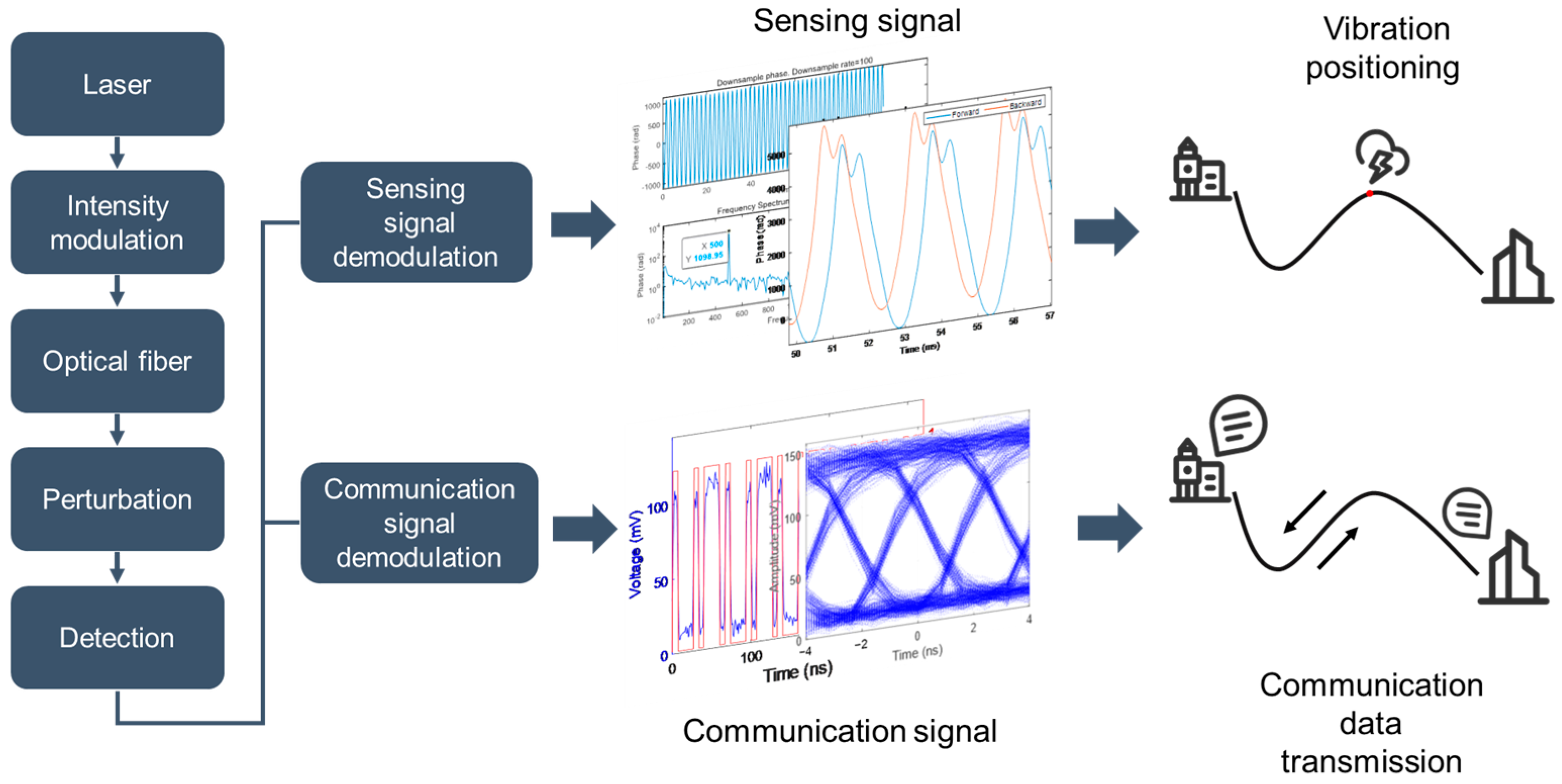
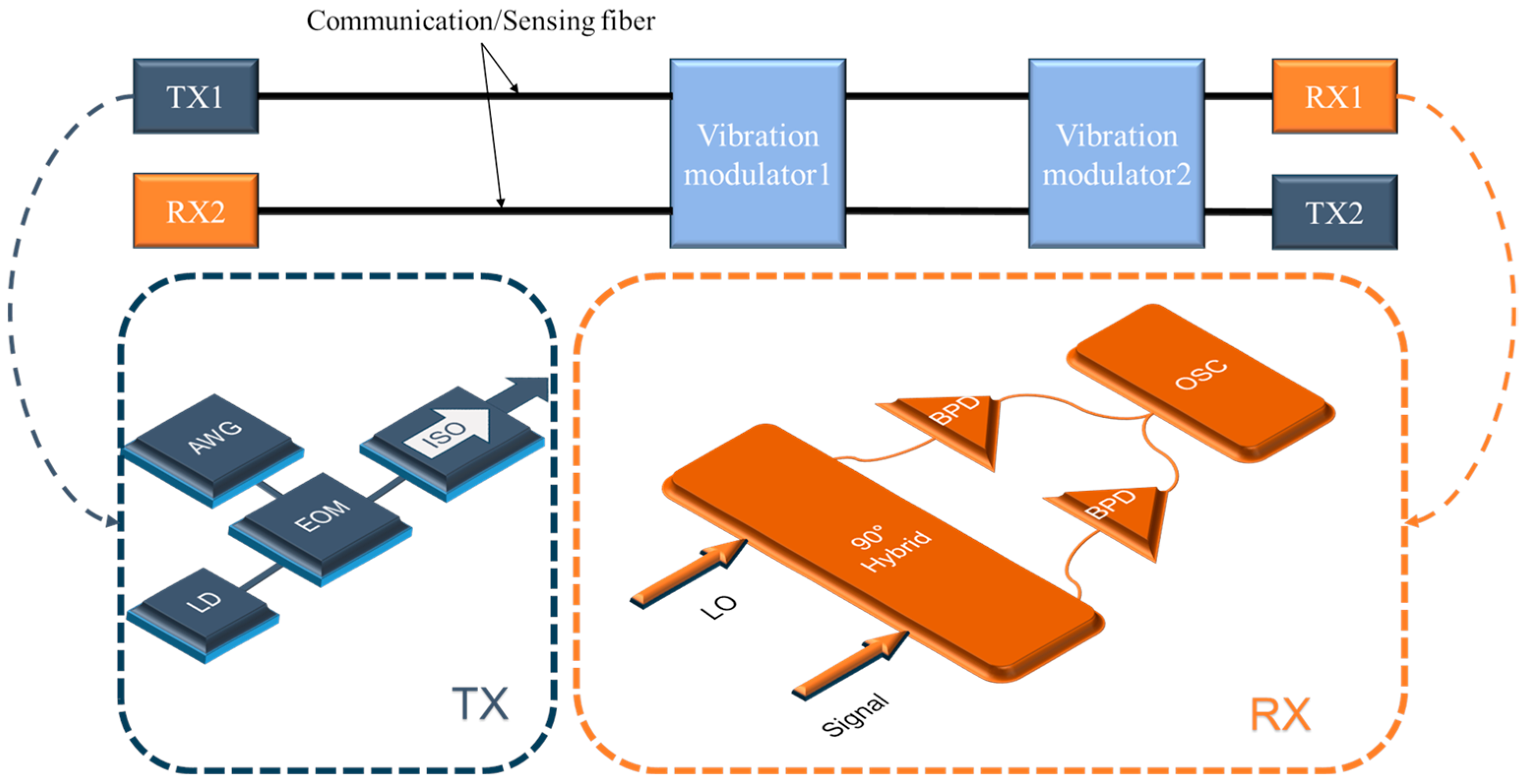



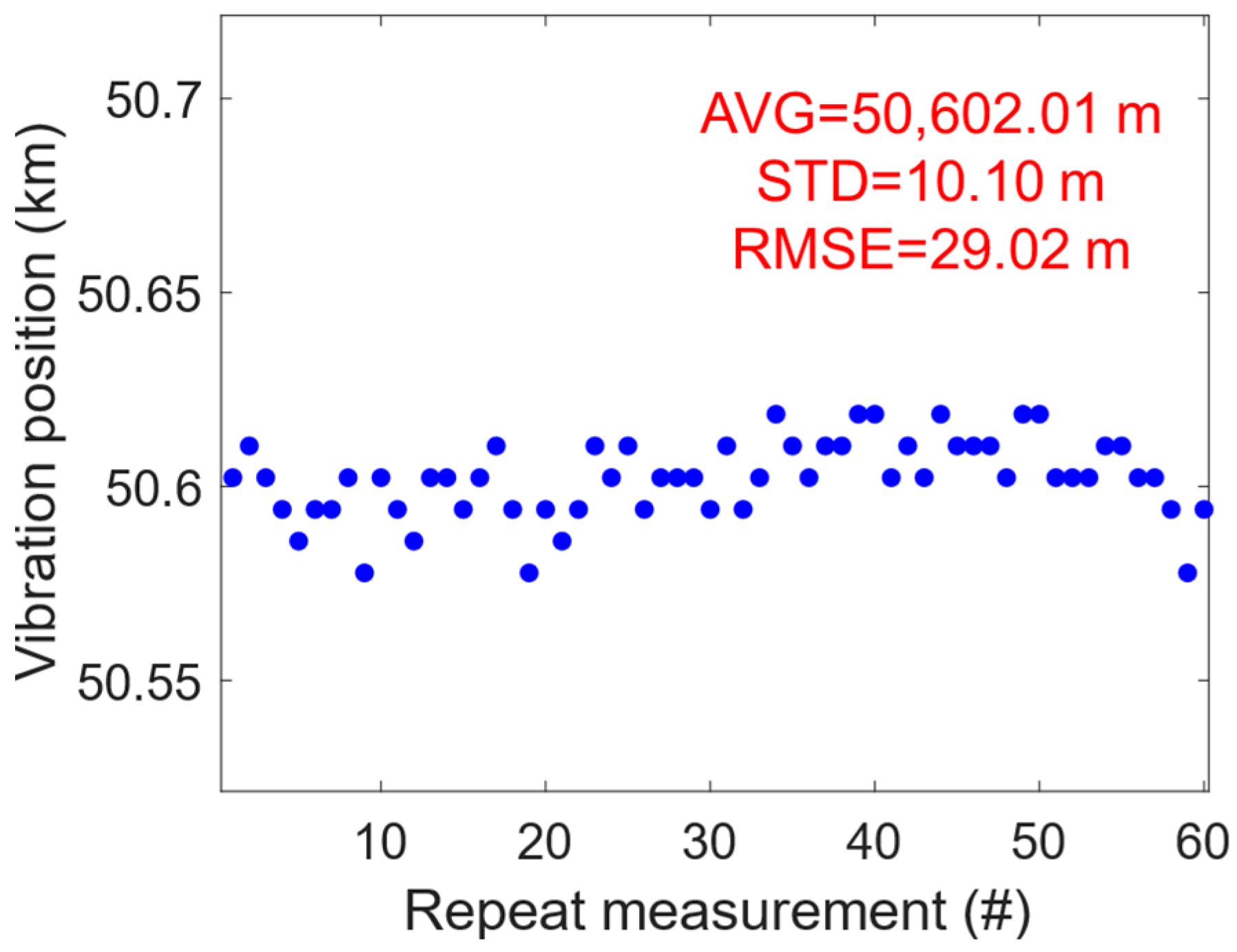
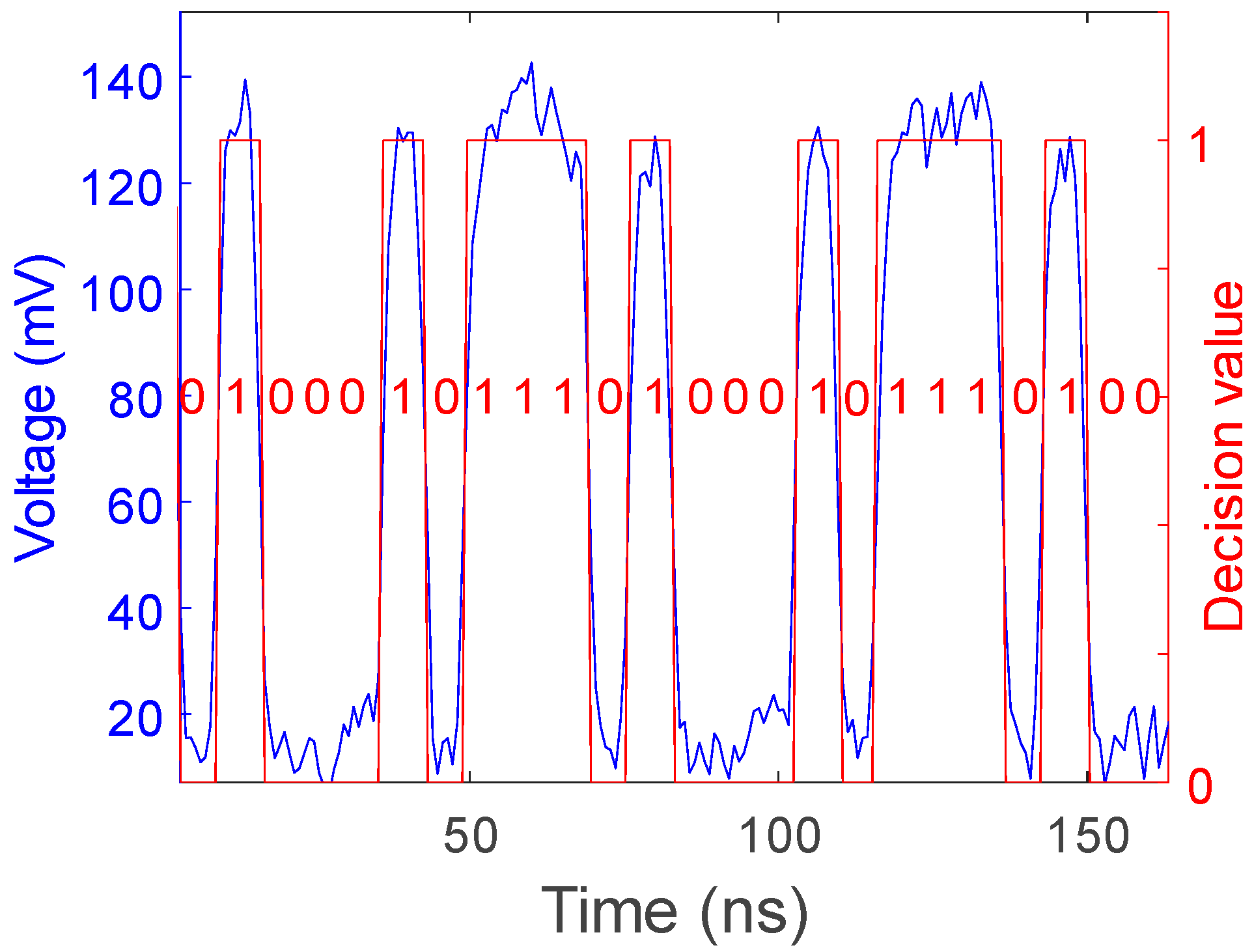
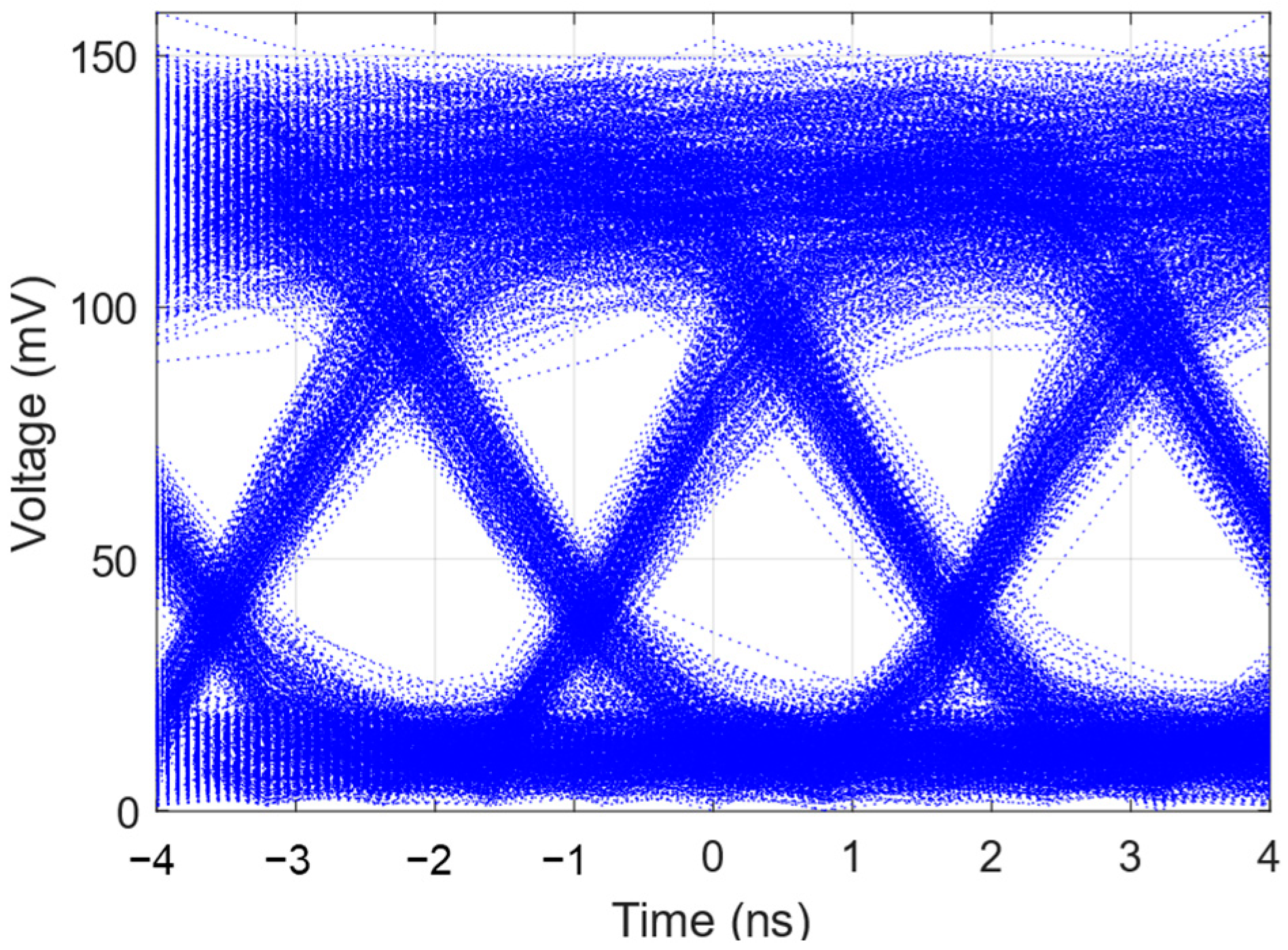

| Frequency (Hz) | Sensitivity (rad/με) | LoD (pε/Hz1/2) |
|---|---|---|
| 10 | 398.93 | 21.38 |
| 400 | 397.56 | 15.49 |
| 1000 | 398.98 | 8.28 |
| QdB | 13 | 14 | 15 | 16 | 17 | 17.1 | 17.2 |
| BER | 4.2 × 10−6 | 2.8 × 10−7 | 9.6 × 10−9 | 1.4 × 10−10 | 7.4 × 10−13 | 4.1 × 10−13 | 2.2 × 10−13 |
Disclaimer/Publisher’s Note: The statements, opinions and data contained in all publications are solely those of the individual author(s) and contributor(s) and not of MDPI and/or the editor(s). MDPI and/or the editor(s) disclaim responsibility for any injury to people or property resulting from any ideas, methods, instructions or products referred to in the content. |
© 2024 by the authors. Licensee MDPI, Basel, Switzerland. This article is an open access article distributed under the terms and conditions of the Creative Commons Attribution (CC BY) license (https://creativecommons.org/licenses/by/4.0/).
Share and Cite
Zhu, R.; Rao, X.; Dai, S.; Chen, M.; Liu, G.; Liu, H.; Xu, R.; Chen, S.; Chen, G.Y.; Wang, Y. Deep Integration of Fiber-Optic Communication and Sensing Systems Using Forward-Transmission Distributed Vibration Sensing and on–off Keying. Sensors 2024, 24, 5758. https://doi.org/10.3390/s24175758
Zhu R, Rao X, Dai S, Chen M, Liu G, Liu H, Xu R, Chen S, Chen GY, Wang Y. Deep Integration of Fiber-Optic Communication and Sensing Systems Using Forward-Transmission Distributed Vibration Sensing and on–off Keying. Sensors. 2024; 24(17):5758. https://doi.org/10.3390/s24175758
Chicago/Turabian StyleZhu, Runlong, Xing Rao, Shangwei Dai, Ming Chen, Guoqiang Liu, Hanjie Liu, Rendong Xu, Shuqing Chen, George Y. Chen, and Yiping Wang. 2024. "Deep Integration of Fiber-Optic Communication and Sensing Systems Using Forward-Transmission Distributed Vibration Sensing and on–off Keying" Sensors 24, no. 17: 5758. https://doi.org/10.3390/s24175758
APA StyleZhu, R., Rao, X., Dai, S., Chen, M., Liu, G., Liu, H., Xu, R., Chen, S., Chen, G. Y., & Wang, Y. (2024). Deep Integration of Fiber-Optic Communication and Sensing Systems Using Forward-Transmission Distributed Vibration Sensing and on–off Keying. Sensors, 24(17), 5758. https://doi.org/10.3390/s24175758









